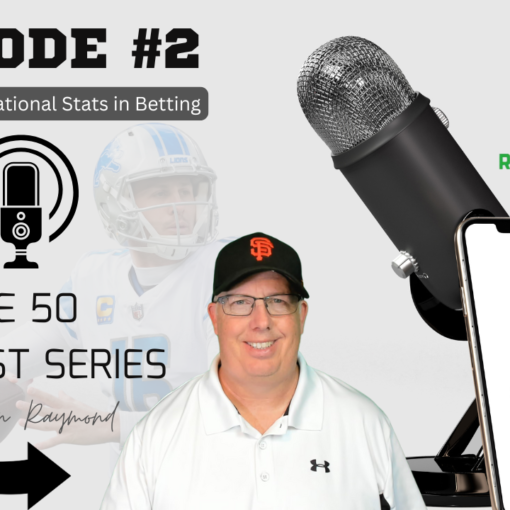In sports betting, one of the most important skills you can master is risk assessment. Understanding how to assess and manage risk is the difference between a long-term profitable bettor and one who is destined to lose their bankroll. Today’s article is dedicated to dissecting how to evaluate risk effectively and calculate probabilities in a way that supports a logical, informed betting strategy.
What is Risk Assessment in Sports Betting?
Risk assessment in sports betting refers to understanding the potential for loss, not just the potential for gain. To be successful, sports bettors need to assess each bet based on the odds, team performance, and broader situational factors. It’s not just about whether the team looks strong or weak; it’s about how likely they are to deliver on your bet in a specific scenario.
In the Raymond Report betting system, risk is evaluated through a combination of factors such as:
- Team Performance: How has the team been performing recently? Are they in a bullish (positive), neutral, or bearish (negative) cycle? Are there significant injuries or roster changes that could impact their performance?
- Odds and Value: Are you getting value with the odds offered? For example, if the odds on a strong team to cover the spread are high, but their recent performance suggests they should outperform expectations, there may be value in that bet.
- Game Context: Is the game home or away? Is there any notable historical context or head-to-head data? Certain teams perform better in specific contexts (e.g., home games or certain weather conditions).
Calculating Probabilities: The Foundation of Informed Betting
The next step in risk assessment is calculating probabilities. A key element in becoming a savvy bettor is calculating how likely an outcome is, and comparing that to the odds being offered by sportsbooks. Here’s how to break it down:
- Implied Probability of the Odds: Every odd offered by a sportsbook reflects the implied probability of that outcome happening. For example, odds of +200 imply a 33.33% chance of winning, while odds of -150 imply a 60% chance. It’s important to compare this implied probability to your own calculated probability of the event occurring.
- Win Rate and Risk-Reward: In the Raymond Report system, it’s important to evaluate the team’s win rate over time, especially within the current season. A team with a high win rate (60% or more) has a greater chance of succeeding, but the risk-to-reward ratio should also be calculated. For example, betting on a team with a 70% win rate at odds of -300 offers less reward compared to betting on a 50% win rate team at odds of +200.
- Expected Value (EV): Expected value is a crucial part of calculating long-term profitability in sports betting. It helps determine the amount of money you can expect to win or lose per bet, on average. To calculate EV, you multiply the probability of winning by the potential payout, and subtract the probability of losing multiplied by the bet amount.
Formula:
EV = (probability of win x payout) – (probability of loss x wager)
For example, if you’re betting $100 on a team at +200 odds (with a 33% chance of winning), the expected value would be:
EV = (0.33 x 200) – (0.67 x 100) = 66 – 67 = -$1
Even though the payout looks good, the expected value here is slightly negative. The more positive your EV, the more confident you can be that a bet will be profitable in the long run.
The Human Element: Balancing Risk with Discipline
While data and probabilities form the foundation of effective betting, the human element cannot be ignored. Betting discipline and emotional control are critical to successfully managing risk. The temptation to increase stakes after a loss, or chase after high-risk high-reward bets after a win, can cloud judgment and lead to significant losses.
It’s important to have a defined bankroll management system and only wager a small percentage of your bankroll on each bet (e.g., 1-2%). This prevents overexposure to any single outcome and helps mitigate the risk of total loss.
Example: The Risk of Betting on Underdogs
One of the most common mistakes among bettors is overestimating the potential of underdogs. While betting on underdogs can yield great returns, it’s often a high-risk play. Let’s take a look at an example:
Imagine you’re betting on an underdog team with a 45% win rate against a heavily favored team with a 70% win rate. The underdog has the potential to win, but the probability is lower. Betting on this team would offer high odds, but it’s crucial to assess whether the potential reward outweighs the risk. In this case, unless you have strong situational data (e.g., the favorite has multiple injuries or is on the road), betting on the underdog might not be the wisest decision.
The Takeaway
Sports betting is all about managing risk and calculating probabilities to make informed decisions. By integrating risk assessment, understanding implied probabilities, calculating expected value, and maintaining discipline, you can improve your chances of success. The key is to continuously analyze each bet and remember that long-term profitability is built on careful, thoughtful decisions—not emotional reactions.
Mastering the art of risk assessment and probability calculation is essential for achieving consistent success in sports betting. By applying these strategies and using data-driven insights, you’ll be better positioned to make smarter, more profitable bets.
Would you like to dive deeper into risk management strategies or learn more about probability in sports betting? Stay tuned for more of our Sports Betting Puzzle series, where we break down the complexities of betting into simple, actionable insights.





